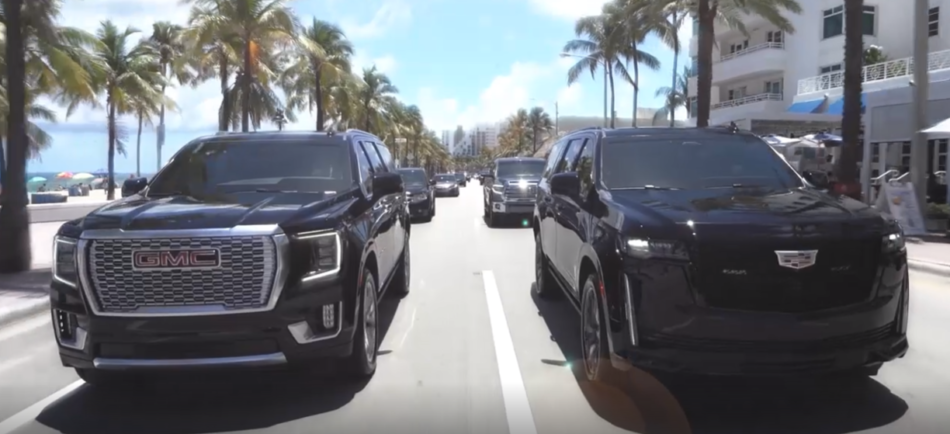In today’s world, security is no longer a luxury—it’s a necessity. Whether it’s government convoys, cash-in-transit operations, or executives traveling in high-risk regions, armored vehicles are critical for safe transportation in unpredictable situations. Designed to withstand threats like gunfire, explosions, and forced entry, these specialized vehicles provide mobile protection when it matters most.
This article will guide you through what armored vehicles are, how they work, who uses them, and why they’re an essential part of modern security strategies.
What is an Armored Vehicle?
An armored vehicle is a car, SUV, truck, or even military tank that has been modified or built from the ground up to protect occupants from external threats. These vehicles are equipped with ballistic-resistant materials, reinforced structures, and advanced security systems to ensure survival in life-threatening situations.
Unlike regular cars, armored vehicles are engineered to absorb or deflect bullets, withstand blasts, and protect against forced intrusion—all while looking discreet and maintaining driveability.
Types of Armored Vehicles
There are two primary categories of armored vehicles:
1. Civilian Armored Vehicles
These are standard commercial vehicles (like sedans, SUVs, and pickups) that are reinforced for personal protection. They’re often used by:
- Diplomats and ambassadors
- Business executives
- High-profile individuals
- Security contractors
- NGOs operating in conflict zones
Popular models include the Toyota Land Cruiser, Mercedes-Benz G-Class, Chevrolet Suburban, and Range Rover.
2. Military Armored Vehicles
These are purpose-built machines designed for combat, tactical operations, and transport in conflict zones. Examples include:
- Armored Personnel Carriers (APCs)
- Mine-Resistant Ambush Protected (MRAP) vehicles
- Infantry Fighting Vehicles (IFVs)
- Tanks and troop carriers
Military-grade armored vehicles are used by armed forces, peacekeeping missions, and law enforcement agencies around the world.
Key Features of Armored Vehicles
Whether civilian or military, most armored vehicles include some or all of the following features:
🔹 Ballistic Steel Armor
The body panels are reinforced with hardened steel or composite materials that can withstand bullets, shrapnel, and blunt force.
🔹 Bulletproof Glass
Also called ballistic glass or transparent armor, this multi-layered material can resist bullets from pistols, rifles, and even armor-piercing rounds depending on thickness and rating.
🔹 Run-Flat Tires
These specialized tires allow the vehicle to drive even after being punctured, typically up to 50 km at moderate speeds.
🔹 Explosion-Resistant Floor
A reinforced undercarriage protects against landmines and improvised explosive devices (IEDs), especially in military and tactical vehicles.
🔹 Reinforced Suspension and Brakes
The extra weight of armor requires upgraded suspension systems and high-performance braking for safe handling.
🔹 Sealed Fuel Tank
Armored vehicles often have explosion-resistant or self-sealing fuel tanks to prevent fires after impact.
Levels of Protection
Armored vehicles are classified based on the level of ballistic protection they provide. Some common standards include:
- NIJ (National Institute of Justice – U.S.)
- VPAM (Germany)
- EN 1063 (Europe)
Common Protection Levels:
| Level | Stops | Use Case |
|---|---|---|
| B4 | Handguns (up to .44 Magnum) | Civilian protection |
| B6 | Assault rifles (e.g., AK-47, M16) | Executive/NGO security |
| B7 | Armor-piercing rounds | High-risk zones |
| Military | Explosives, mines, IEDs | Combat vehicles |
The higher the level, the more protection—and the more weight and cost.
Who Uses Armored Vehicles?
✔ Government Agencies
Heads of state, diplomats, and politicians often travel in armored vehicles for protection against political threats and assassination attempts.
✔ Military and Law Enforcement
Armored vehicles are essential for military operations, riot control, and SWAT missions.
✔ Private Security Firms
Security contractors and bodyguard teams use armored vehicles for transporting clients safely in high-risk areas.
✔ Financial Institutions
Banks and armored truck services use them to transport cash, gold, and sensitive documents.
✔ Media and Humanitarian Workers
Journalists and aid workers in conflict zones rely on armored vehicles for mobility and safety.
Cost of an Armored Vehicle
The price of an armored vehicle depends on the model, type of armoring, and protection level:
- Civilian armored vehicle (light protection): $50,000 – $150,000
- High-end luxury armored vehicle: $200,000 – $500,000+
- Military-grade vehicles: $500,000 – $1 million+
These figures can vary widely based on custom features, communication systems, and vehicle size.
Benefits of Armored Vehicles
- ✅ Enhanced Safety: Protection against gunfire, explosives, and assault.
- ✅ Discreet Appearance: Most civilian armored vehicles look like regular cars, avoiding attention.
- ✅ Peace of Mind: High-risk individuals can travel with confidence.
- ✅ Operational Versatility: Useful in both urban environments and off-road terrains.
Challenges to Consider
- ❌ High Cost: Upfront investment and ongoing maintenance can be expensive.
- ❌ Reduced Performance: Extra weight affects speed, fuel economy, and agility.
- ❌ Legal Restrictions: In some regions, high-level armor requires permits or is restricted.
Conclusion
Armored vehicles play a vital role in ensuring safety on the move, whether for civilian, law enforcement, or military purposes. Their robust design, advanced features, and discreet appearance make them the go-to choice for individuals and organizations operating in high-threat environments.
With global uncertainty on the rise, armored vehicles are no longer just tools of war—they are shields of security in everyday life. Whether you’re protecting valuable assets, people, or yourself, an armored vehicle is an investment in peace of mind.






